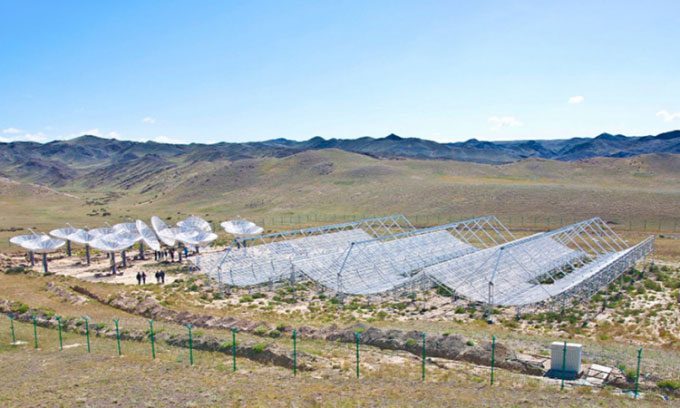$9 Million Telescope Set to Operate Next Year, Protecting Power Grids, Satellites, and Astronauts from Solar Winds.
China has begun construction on the Mingantu Interplanetary Scintillation Telescope (IPS) in Inner Mongolia, as reported by SCMP on June 29. Once completed, it will be the most sensitive telescope of its kind in the world, playing a crucial role in monitoring solar winds, which help protect Earth’s power grids as well as astronauts and satellites in space.

The Mingantu IPS telescope will join a network of antennas built on the Inner Mongolian grasslands. (Photo: SCMP)
Solar winds are streams of charged particles emitted from the atmosphere of the sun. Traveling through the solar system at speeds of hundreds of kilometers per second, they also interact with Earth’s magnetic field. This interaction creates stunning auroras in the sky but can also lead to geomagnetic storms that affect communication systems and power grids. In February, such a storm damaged 40 SpaceX Starlink satellites.
There are various methods to study solar winds, such as sending spacecraft close to the sun, according to radio astronomer Chen Linjie at the National Astronomical Observatory of China in Beijing, a member of the Mingantu IPS development team. However, ground-based telescopes are also very useful and less costly. IPS telescopes have been constructed in various locations around the world since the 1970s, including in India, Japan, and Mexico.
The Mingantu IPS will monitor interplanetary scintillation—the random fluctuations of radio signals from deep space as they pass through solar winds toward Earth.
“This is similar to watching twinkling stars in the night sky. Your eyes receive optical waves scattered by Earth’s atmosphere. Our telescope detects radio waves scattered by solar winds,” Chen explained. By measuring radio waves, scientists can reconstruct the 3D structure of solar winds, including speed, density, and other important parameters.
The Mingantu IPS telescope, valued at $9 million, is named after an 18th-century Mongolian astronomer. The facility will feature three rotating cylindrical antennas, each 140 meters long and 40 meters wide, capable of observing thousands of radio sources when it begins operations next year. It will also integrate with two smaller telescopes nearby to form a triangular network, enhancing observational accuracy.
The Mingantu IPS is expected to be assembled by August and start calibration in September. “We have never constructed such large cylindrical antennas, so this will be a challenge,” Chen said. The telescope’s installation site is a remote corner in the northern Gobi Desert. Astronomers chose this location about 15 years ago due to its sparse population and surrounding mountains, which help minimize radio wave interference.




















































